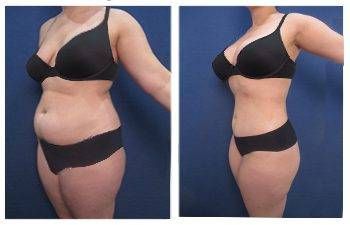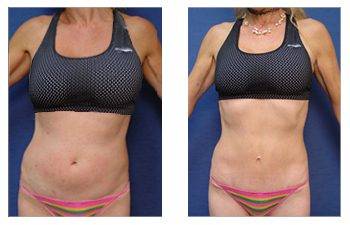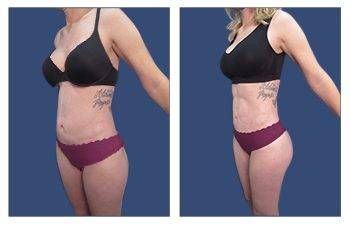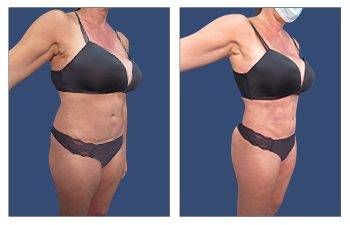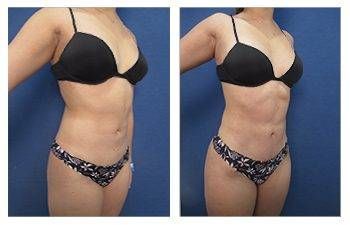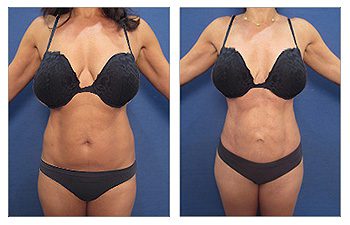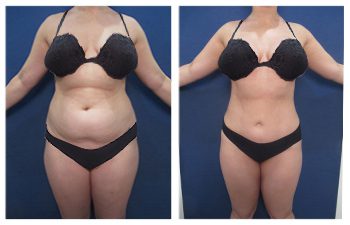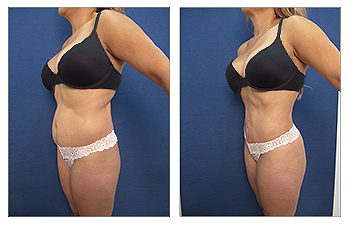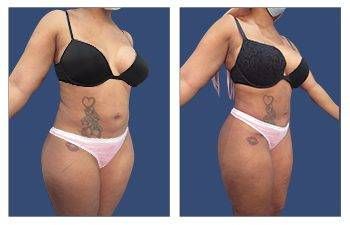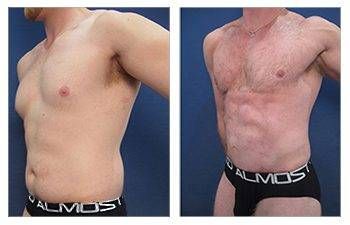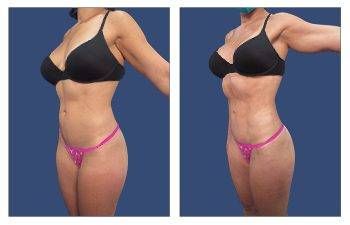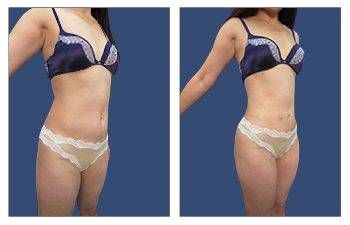Have you ever found yourself staring at your outie belly button, wondering how it came to be? Or perhaps you’ve spent time comparing it with someone else’s innie and pondered why they’re different?
We all have our unique narratives – even for something as apparently inconsequential as the form of our belly button. Yet, this small detail can hold a world of intrigue.
Dive in with us on an exploratory journey beneath the surface (literally), unraveling fascinating facts about outies. From understanding their formation and related medical conditions to treatment options if you consider altering their appearance – we cover all grounds.
Buckle up! This voyage into the realm of outies will change how you view that tiny bump or hollow in your midsection!
Understanding the Formation of Outie Belly Buttons
The Real Story Behind Belly Button Formation
To understand how our bodies decide between giving us an ‘innie’ or ‘outie,’ we need to look at biology. An outie belly button, medically known as an umbilical hernia or granuloma, isn’t just a random occurrence. It results from several biological and medical factors during and after birth.
A newborn’s umbilical stump dries and falls off within one to two weeks after birth; what remains forms the belly button. It usually heals inwardly, forming an “innie”.
But sometimes, for various reasons, including medical conditions like hernia or granuloma – suppose there’s extra scar tissue left behind – voila. You’ve got yourself an umbilical granuloma. You get gifted with a cute little bump called “outie.” So technically speaking, there isn’t much choice in this matter, but still, ‘Innie vs. Outie’ makes for quite fascinating debates around dinner tables.
The Role of Umbilical Cord Healing in Belly Button Formation
After childbirth, the umbilical cord is severed near the baby’s body, resulting in a belly button that may be an innie or outie. How it heals can lead to either an inner or outer appearance. In most cases, once the remaining stump falls off within 1-2 weeks, you’ll get an ‘innie.’ Sometimes, however, the expected outcome may not occur.
Sometimes, that cute little tummy bulge could be due to something more serious like an umbilical hernia. The stats show around 20% of newborns may have one at birth, with only about 1% persisting beyond their first birthday.
This happens when part of the intestine pushes through the abdominal muscles near where the cord was attached, resulting in a noticeable bump. It might sound scary, but these usually resolve by age four.
Fascinatingly,” innies,” making up approximately 90% of all belly buttons, aren’t the norm everywhere. For instance, outies are more common in some African cultures due to traditional cord care practices.
Whether you’ve got an innie or outie, they both work the same and won’t impact your health.
Tummy Tuck Surgery and Its Impact on Belly Button Appearance
Introduction to Avoiding Outie Belly Button
The decision to undergo a tummy tuck, or abdominoplasty, is a significant step towards achieving a more toned and contoured abdomen. For many individuals, a tummy tuck can be a life-changing procedure that helps restore self-confidence and enhances their overall appearance.
However, like any surgical procedure, there are potential complications to consider. One such concern is the development of an “outie” belly button, where the navel protrudes unnaturally after the surgery.
This comprehensive guide will explore the causes of outie belly buttons following a tummy tuck and provide expert advice on avoiding this outcome.
When considering a tummy tuck surgery, many people have questions about the potential changes to their belly button. It’s not unusual for patients to worry that they might end up with an ‘outie’ instead of an ‘innie.’ But how valid are these concerns?
Understanding the Tummy Tuck Procedure
Before delving into the specifics of avoiding an outie belly button, it’s essential to understand the tummy tuck procedure itself. To start, let’s clarify what a tummy tuck surgery is.
A tummy tuck involves the removal of excess skin and fat from the abdominal area, as well as the tightening of abdominal muscles to create a more streamlined silhouette. The procedure can be a game-changer for individuals who have lost significant weight, experienced pregnancy-related changes, or want a flat abdomen.
However, this transformative process can sometimes alter the appearance of your belly button.
The Anatomy of the Belly Button
The belly button, or umbilicus, plays a central role in the aesthetics of the abdomen. During a tummy tuck, the belly button is typically repositioned to maintain its natural appearance as the skin is tightened and excess tissue is removed. This repositioning is where the potential for an outie belly button comes into play.
Causes of an Outie Belly Button After a Tummy Tuck
An outie belly button after a tummy tuck occurs when the repositioning of the belly button isn’t executed correctly. This can be due to several factors, including:
- Improper Technique: If the surgeon fails to reposition the belly button while tightening the abdominal muscles properly, it can lead to an unnatural protrusion. This step requires trimming the belly button stalk so it does not protrude if the stalk is too long. Another consideration is trimming the belly button, so it is not too large. When the belly button stalk is too long, it can protrude and appear like a large target.
- Tension on the Sutures: The sutures used to secure the belly button stalk are critical to ensuring that the new belly button line, called the neo-umbilicus, is well hidden in the newly created belly button shadow. If the belly button is not appropriately secured, it can protrude beyond the natural belly button shadow and thus be apparent following healing.
- Inadequate Blood Supply: Insufficient blood supply to the repositioned belly button can result in tissue necrosis, leading to an outie appearance, scarring, and belly button contracture.
How Scar Tissue Influences Belly Button Shape Post-Surgery
Creating scar tissue post-surgery is inevitable as it is crucial to healing wounds. The issue arises when this scar tissue develops around the navel area after undergoing a tummy tuck.
This could lead to some degree of distortion in its shape or position, possibly giving you an outie belly button post-surgery even though surgeons take utmost care during the procedure to maintain natural aesthetics as much as possible.
Remember that everyone heals differently; thus, variations occur based on individual bodies and their responses toward healing mechanisms.
Avoiding Outies: Prevention Measures
Surely nobody signs up for cosmetic surgery only to be unhappy with certain aspects? So here comes the good news.
Preventing an outie belly button following a tummy tuck requires meticulous planning, precise surgical techniques, and careful postoperative care. Your surgeon can consider preventive measures during the operation, drastically reducing the chances of ending up with an unwanted outie.
Here are some expert tips to help you avoid this potential complication:
- Choose a Board-Certified Surgeon: The first step in ensuring a successful tummy tuck with a natural-looking belly button is selecting a qualified and experienced board-certified cosmetic surgeon. Research their credentials, view before-and-after photos of their previous patients, and schedule a consultation to discuss your concerns and expectations.
- Communicate Your Desires: Open communication with your surgeon is crucial. Clearly express your goals, concerns, and any specific preferences regarding the appearance of your belly button post-surgery.
- Evaluate Past Results: During your consultation, ask to see examples of the surgeon’s past tummy tuck procedures. Pay close attention to the appearance of the belly button in these cases to gauge the surgeon’s skill in repositioning.
- Customized Surgical Plan: Surgeons map out the surgery meticulously to ensure minimal disruption to your belly button’s natural look. A skilled surgeon will create a customized surgical plan tailored to your body’s unique anatomy. This plan should address how the belly button will be repositioned to ensure a natural, aesthetically pleasing result.
- Innovative Techniques: Using specific surgical methods and careful handling can help retain an innie appearance post-surgery. Advances in surgical techniques, such as using an umbilicator to help identify a well-secured belly button stalk following redraping of the abdominal skin. Surgeons may avoid appropriately securing the belly button stalk because they fear not being able to locate the stalk accurately, and they are worried that they won’t be able to find the stalk after redraping the abdominal skin. However, using our proprietary tool, the umbilicator, during surgery, it is possible to secure the belly button stalk for accurate retrieval and positioning at the end of surgery. Accurate localization of the belly button stalk also preserves blood supply during surgery, significantly reducing the risk of an outie belly button.
- Careful closure: Proper suturing of the wound is crucial in preserving the shape of your belly button after a tummy tuck.
- Follow Postoperative Instructions: Adhering to your surgeon’s postoperative care instructions is vital for a successful recovery. Avoid strenuous activities, wear compression garments as recommended, and keep the surgical area clean and dry.
- Monitor Healing: Keep a close eye on your belly button’s healing progress. Contact your surgeon promptly if you notice unusual swelling, redness, or discomfort.
- Maintain a Healthy Lifestyle: Leading a healthy lifestyle with proper nutrition and regular exercise can aid in your body’s healing process and contribute to the overall success of your tummy tuck.
Surgical Correction for Outie Belly Buttons
Let’s talk about outies. Not the cars, but belly buttons. For some of us, having an outie is a unique characteristic we’ve learned to love. For certain people, having an outie can be a cause of unease.
Enter umbilicoplasty – a surgical procedure that transforms an outie into an innie. Yes, you heard right; there’s help available if your navel sticks out more than you’d like.
This study on different techniques in umbilical reconstruction reveals fascinating insights about this surgery.
The Umbilicoplasty Procedure
Simply put, surgeons make small incisions around the belly button and reshape the area using sutures beneath the skin surface. The aim? To give patients that desired ‘innie’ look while maintaining natural aesthetics.
This isn’t just cosmetic magic; umbilicoplasty also corrects medical conditions like hernias or protruding navels due to obesity.
The Road to Recovery Post-Surgery
There’s no need to worry about being bedridden after getting this done. Most folks bounce back quickly post-procedure and can return to their daily routine within two weeks.
- Avoid heavy lifting during the recovery period.
- Maintain hygiene by cleaning the surgical site regularly.
- Lay off vigorous exercises until fully healed.
Why not consider a surgical correction for an outie belly button to improve your body confidence?
At SurgiSculpt, we have years of experience helping patients get the navel they desire through surgical correction for outie belly buttons. Let’s be real–even a minor improvement in body assurance can make a huge difference.
What If My Baby Already Has An Outie?
Outie Belly Buttons in Babies and Newborn Care:
The world of newborn care can be quite puzzling, especially regarding outie belly buttons. If your newborn has developed an outie, there’s no need for panic. As stated earlier, many cases rectify themselves naturally over time.
These cute little protrusions are common among babies, but what causes them? An umbilical hernia, for instance, is one possible cause. According to research, this condition occurs in about 20% of all babies. But don’t fret. Most umbilical hernias resolve independently by the time a child turns five.
Now, let’s discuss prevention – specifically umbilical cord care after birth. Keeping the area clean and dry helps prevent infection, which could lead to an outie belly button. A simple rule: Less fussing means less chance of an ‘outie.’
Taking good care of your baby’s umbilical stump is vital in determining whether they have an innie or an outie belly button.
- Clean the area around the stump with plain water only (no soap needed).
- Dry thoroughly using a soft cloth; moisture might delay the healing process.
- Avoid covering the stump with diapers; expose it to air as much as possible.
However, surgical correction may be necessary in some cases if an umbilical hernia causes the outie belly button and doesn’t go away on its own or causes discomfort to your baby. It is always advisable to talk with a pediatrician.
Finally, remember that every child and their belly buttons are unique. Whether they have an innie or outie does not affect their health – but understanding how these differences arise can help ease new parents minds.
You’ve got this.
Adult Prevalence and Causes of Outie Belly Buttons
You might think that outie belly buttons are a childhood thing. But did you know adults can have them? According to research, about 7% of adults sport an outie. So, what causes this?
Several factors can lead to an adult having an ‘outie.’ One common cause is ascites – a buildup of fluid in the abdomen often linked with liver disease or cancer.
The swelling caused by ascites can push your belly button outward, creating that distinct “outie” appearance. It’s like blowing up a balloon – as it expands, the knot (your navel) pushes outward.
Hepatosplenomegaly is another medical condition contributing to adult outies. This mouthful of a term refers to the simultaneous enlargement of the liver and spleen, which can alter your body shape significantly enough for even your belly button position. Think space invasion – when there’s not enough room, things start popping out.
And let’s not forget pregnancy. The growing baby bump has been known to turn innies into outies due to increased abdominal pressure.
Belly Button Alterations: More Common Than You’d Think
If you’re among those adults who wish they could swap their outies for innies but aren’t keen on surgical intervention- here’s some comforting news: a whopping 3% of adults seek non-surgical methods to alter their belly button shape.
That’s right. You’re not alone in your desire for an innie. So, whether you’ve got ascites, hepatosplenomegaly, or just weren’t blessed with an ‘innie’ at birth- there are options.
The Innie vs. Outie Debate
A long-standing debate has split the world into two camps: innies and outies. We’re talking about belly buttons, of course. Let’s set the record straight on some misconceptions about these novel variations.
An interesting stat is that 90% of people have an innie, making it far more common than its protruding counterpart. This might make you wonder why so few people sport an outie.
Misconceptions About Outies
Contrary to popular belief, having an outie doesn’t mean your doctor botched up cutting your umbilical cord as a baby. The formation process is way more complex and can involve factors like umbilical hernias or granulomas.
Maintaining Hygiene with an Outie Belly Button
Hygiene matters, whether you have an innie or outie belly button. But cleaning an outie belly button requires a bit more attention due to its unique shape and crevices.
You might be wondering why. It’s simple – the protruding nature of outies can trap dirt, sweat, and bacteria more easily than their innie counterparts. This could lead to infections if not cleaned regularly and properly.
Cleaning Steps for Outies
To kick things off, gather your cleaning essentials: mild soap (preferably unscented), warm water, a soft washcloth or cotton swab, and a clean towel. Once you’ve got everything ready:
- Apply warm, soapy water on your belly button using the washcloth or cotton swab.
- Make sure you get into all nooks by gently rotating the cloth/swab in circular motions around your navel area.
- Rinse thoroughly but carefully with clean, warm water until all soap residue is gone – we don’t want any left behind.
- Pat dry using a fresh towel; avoid rubbing as it may irritate this sensitive area. Remember: always pat dry, never rub.
Tips for Optimal Navel Health
Here are a few extra tips that will help keep that cute little “button” of yours healthy:
- Avoid picking at it. I know it’s tempting, but remember what our moms used to say about nose-picking? The same rules apply here.
- If you notice redness, itching, discharge, pain, or heat rash around or inside the navel, immediately contact professional medical help because these symptoms could indicate an infection.
- Keep your belly button dry, as moisture can create a perfect environment for bacteria to thrive.
We understand that maintaining hygiene with an outie belly button may feel like extra work, but remember – it’s all about prevention over cure.
FAQs about Outie Belly Button
What causes an outie belly button?
An outie forms when the umbilical cord stump heals in a certain way. Conditions like umbilical hernias or granulomas can also play a part.
Is it OK to have an outie belly button?
Having an outie is perfectly normal and doesn’t pose any health risks. It’s just another unique aspect of our bodies.
How rare is an outie belly button?
About 10% of people sport an outie, making them less common than innies but not particularly rare.
Which is better: innie or outie belly button?
No type is “better.” Whether you have an innie or an outy comes down to how your body heals after birth—it’s as simple as that.
Conclusion
- Well, we’ve journeyed deep into the world of the outie belly button, haven’t we? We’ve explored its formation and why some folks have them while others don’t.
- We’ve examined how certain medical conditions like umbilical hernias can lead to an outie. And let’s not forget about scar tissue from surgeries such as a tummy tuck – it plays a part, too!
- A tummy tuck can provide transformative results, but the risk of an outie belly button is a valid concern.
- By partnering with a skilled surgeon who understands the intricacies of the procedure, communicating your goals effectively, and following proper postoperative care, you can significantly reduce the chances of experiencing this complication.
- Remember that each individual’s body is unique, and outcomes may vary. As you embark on your journey to a flatter abdomen, prioritize your health and well-being to ensure the best possible results from your tummy tuck procedure.
- If you want to transform your outie into an innie, remember surgical procedures like umbilicoplasty are available. But hey! There’s no need for change if you love your unique navel just as it is.
- Babies or adults, everyone can sport an outie. It’s all down to biological factors and has nothing to do with being ‘cut wrong’ during birth – that’s just a myth!
- Maintaining hygiene is crucial regardless of whether you have an innie or outie. Cleanliness keeps infections at bay because cleanliness is key!
- Remember this: Your belly button type doesn’t define who you are; embrace it!



